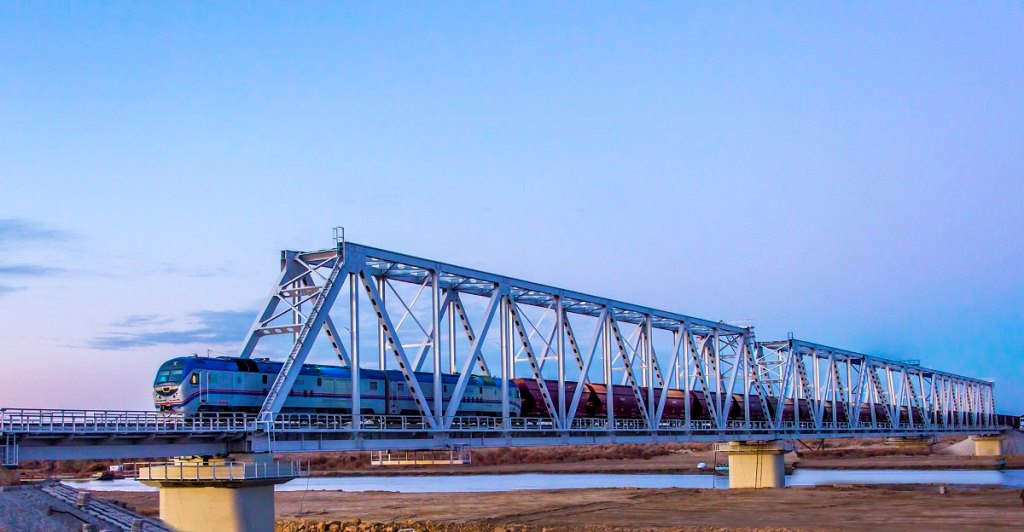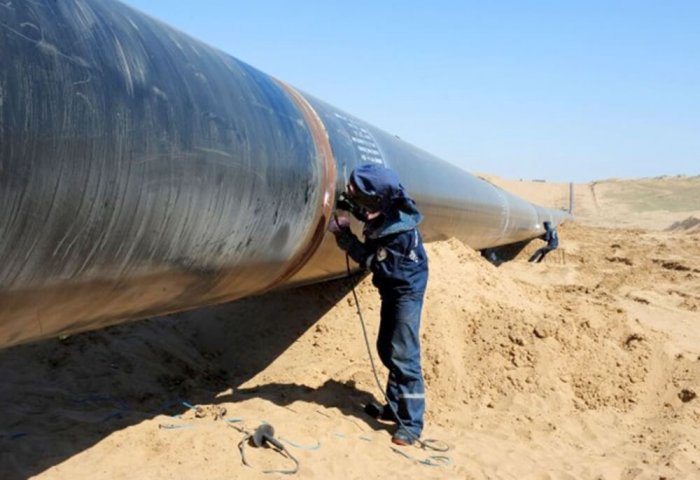Author: Payrav Chorshanbiev, Asia-Plus
 Serdar Berdimuhamedov arrived in Dushanbe in the morning —
Serdar Berdimuhamedov arrived in Dushanbe in the morning — President of Turkmenistan Serdar Berdimuhamedov arrived in Tajikistan today on a state visit. During the visit, the heads of the two states will meet, during which the presidents will consider a wide range of issues related to bilateral cooperation.
The heads of the two countries have something to talk about and it is desirable to agree on, since trade and economic ties between us cannot be called close …
In terms of economic interaction, Turkmenistan is the most distant from Tajikistan among all countries in the region, unless, of course, we forget about the closed border with Kyrgyzstan due to the armed conflict two years ago.
At the same time, the contractual and legal framework with Turkmenistan includes more than 110 documents, most of which have a trade and economic focus.
For comparison, the legal framework with Kazakhstan consists of 93 documents, about the same with Kyrgyzstan.
According to the statistics department of the Republic of Tajikistan, trade with Turkmenistan in 2022 increased by 2.4 times, amounting to about $53 million. A year earlier, this figure was only about $22.2 million.
Last year’s significant growth in trade is associated with an increase in the supply of certain types of Turkmen energy resources. Export of Tajik products last year amounted to only $783,000 – 1.5% of the total volume of bilateral trade.
There are no data on attracting Turkmen capital in the statistics of the State Committee for Investments and State Property Management of the Republic of Tajikistan, and it is extremely difficult to classify Tajikistan as an investor country given the current socio-economic situation in the republic.
Also, there are no special ties between the two countries within the framework of multilateral regional associations, except for the CIS, and this is explained by the neutrality of Turkmenistan under the “patronage” of the UN.
What unites the two countries, perhaps, is that both do not participate in the Unified Energy System of Central Asia. The only difference is that Turkmenistan withdrew from this system in the summer of 2003 of its own accord, while Tajikistan was “helped” by its neighbors: at the end of 2009, Uzbekistan disconnected from the energy system of Tajikistan, accusing the republic of “systematic violation of agreements and established rules.”
As a result, Tajikistan still remains isolated from the regional energy ring.
Tajikistan and Turkmenistan keep each other company only in two regional projects, but even there, to put it mildly, things are not going well.

Gas pipeline Central Asia – China (line D)
The total length of the new line of the Central Asia-China gas pipeline, which involves the supply of Turkmen gas to China, should be 966 km. This line will pass through the territory of Turkmenistan, Uzbekistan (205 km), Tajikistan (391 km), Kyrgyzstan (215 km) and China (155 km).
An intergovernmental agreement on the construction of this gas pipeline on the territory of Tajikistan was signed in September 2013. In March 2014, the Chinese oil and gas company CNPC entered into an agreement with Tajiktransgaz, on the basis of which a joint venture was created for the construction and operation of the Trans-Tajik Gas Pipeline Company Ltd gas pipeline with a share of $300 million each.
The project provides for the construction of 42 mountain tunnels with a total length of 63.3 km and other infrastructure in Tajikistan.
During the implementation of the project, over 3 thousand citizens of Tajikistan will be provided with jobs. Within the republic, the route will pass through the territories of the cities of Tursunzade and Gissar and the districts: Shahrinav, Rudaki, Vakhdat, Faizabad, Nurabad, Rasht, Tajikabad and Lyakhsh to the border of Kyrgyzstan.
It is expected that 25-30 billion cubic meters of natural gas will be supplied annually from Turkmenistan to China through this gas pipeline. The implementation of this project will attract more than $3 billion of Chinese direct investment in the Tajik economy.
However, the construction of the first tunnel (on the territory of the Rudaki district) was completed only in 2020.
The COVID-19 pandemic, which began in the same year, apparently further slowed down the implementation of the project: at least the completion of the construction of the following facilities was not reported.
Railway Line Turkmenistan – Afghanistan – Tajikistan
An agreement on the construction of a railway connecting Tajikistan with Turkmenistan through the territory of Afghanistan was reached by the heads of the three countries back in 2013, when relations between Tajikistan and Uzbekistan were not the best and Tajik trains were periodically delayed on Uzbek territory.
The laying of the first stage of this road, connecting the Turkmen settlement of Atamyrat with the Afghan Akina, was completed at the end of 2016.
In July 2019, Turkmenistan, at its own expense, began the construction of the Afghan section of Akina-Andkhoy, 30 km long. But for various reasons, including restrictions due to the pandemic and the arrival of the Taliban, it was not possible to complete this section.
Last summer, the Ministry of Foreign Affairs of Turkmenistan announced the resumption of the construction of a branch, but the completion of the project in Afghanistan has not yet been reported.
The laying of the railway section, which was supposed to connect Tajikistan with Afghanistan, was not started, including due to disagreements between the parties on the route of the proposed road, as well as lack of money.
The leadership of the Ministry of Transport of the Republic of Tatarstan at the beginning of 2021 stated that the government of the country was negotiating to raise funds for the construction of the Tajik section of this railway.
Then it was reported that the Tajik section, 50 km long, which will require $128 million for laying, runs through the territories of the J. Balkhi and Pyanj regions to the Afghan Kunduz.
In August 2021, the Taliban came to power, with whom the leadership of Tajikistan does not maintain any ties.

In early February of this year, the Ministry of Transport of the Republic of Tatarstan reported that South Korean specialists are working on the development of a feasibility study for the Tajik section of this road. All expenses, according to the ministry, will be covered by the South Korean government, which hopes that the construction of the Tajik section will create conditions for connecting the railways of Central and East Asia.
/// Cross-post from Asia Plus — Originally published at https://asiaplustj.info/ru/news/tajikistan/politics/20230510/turkmenskie-perspektivi-prezidentam-tadzhikistana-i-turkmenistana-est-o-chem-pogovorit-a-glavnoe-dogovoritsya




